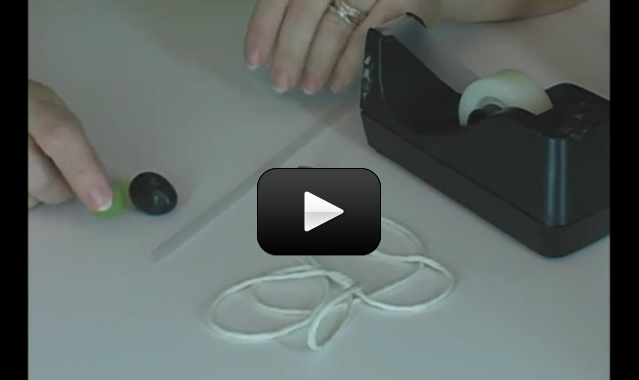Every atom has electrons, and electrons both go around the core and also spin. Depending on how they spin and how much energy the atom has will determine what kind of magnetic properties your atom will have.
Iron is ferromagnetic, which means it’s attracted to both poles of a magnet – bring a nail close to any part of a magnet and you’ll always feel a pull, never a push.
Water (which is what your grape is mostly made up of) is diamagnetic. Things that are diamagnetic are repelled by both poles of a magnet, although very weakly (almost a million times weaker than ferromagnetic).
Paramagnetic materials (like a soda can, hydrogen, lithium, and liquid oxygen) is very weakly attracted to both magnetic poles, but it’s not noticeable until you bring the temperature of the soda can WAY down.
Here’s a nifty way to see diamagnetic properties in a material. Ready?
Please login or register to read the rest of this content.


Are you sure it was the magnet and not the tension in the string that moved the grape? This effect is really hard to observe, so you want to use a very thin filament when you do this experiment.
Wow! That was cool! But when I flipped my magnet around, it actually pulled the grape. Do you know why? Thanks!
Oops – sorry about that! We’re currently updating all the videos and my programmer must have made a mistake. It’s fixed now. 🙂 Let me know if you see anything like this again so we can put it right.
We got the curie heat effect engine video instead of the grape experiment video. Can you please help us find the magnetic grape video?Thanks.
Not as well as grapes… but there might be one I haven’t tried. Look for one that is mostly water. 🙂
Does the expereiment work with other types of fruit?
thanks am gonna try changing the grapes to other things
I wouldn’t say you broke the experiment, but I would try a couple more runs before making any conclusions. 🙂
Soooo…we used two sets of grapes. One on a short straw, and one on a longer straw, just out of curiosity about whether that would affect the speed of oscillation. The first set (long straw) worked great. The second set of grapes was actually attracted to the magnet. It was very bizarre. The straws and grapes from both sets came from the same packages, so there was no difference except the length of the straw. How did we break the experiment?
Nevermind they work now 🙂 YYYYYYYYYYYYYYYYYYYYYAAAAAAAAAAAAAAAAAAAAAAAAAAAYYYYYYYYYYYYYYY 😛
😀
Yes, it actually will, but you have to smack it HARD! Ceramic magnets will break before you hit it hard enough to jar them loose. The nail loses its magnetism much easier, as the domains were not lined up originally (until you swiped it with a magnet).
That makes complete sense! Thank you!
Now, sorry, one more: how come even if you dropped a permanent magnet as much as you wanted, as hard as you wanted, it wouldn’t “lose its magnetism”, unlike a nail or something like that?
Great question! You’ll want to download the reading for this unit, as it talks about this very thing.
The reason that some magnets are stronger than others is because the atoms are all jumbled up. Imagine I gave you a shoe box filled with small magnets. Since I just threw the magnets in there, they are all jumbled up. Some are facing right, some left, some up and some down. Because of the jumble, the whole box may not have much magnetic force since the magnets inside are all canceling each other out. Now, imagine what would happen if the magnets inside the box did all face the same way. If I stuck them all end to end and created a long string of magnets. Now the box would have a very powerful magnetic force, right? This is the difference between an iron nail and a magnet. The nail has iron atoms going all which ways, while the magnet has iron atoms that are fairly lined up. The more lined up the iron atoms are, the stronger the magnetic force.
Does that help?
Hmm, just thought of this. You don’t have to go into it here or anything, I’m just curious. (I don’t know if this question is answered later on in the lesson or not). What determines the strength of a permanent magnet?
-Steph